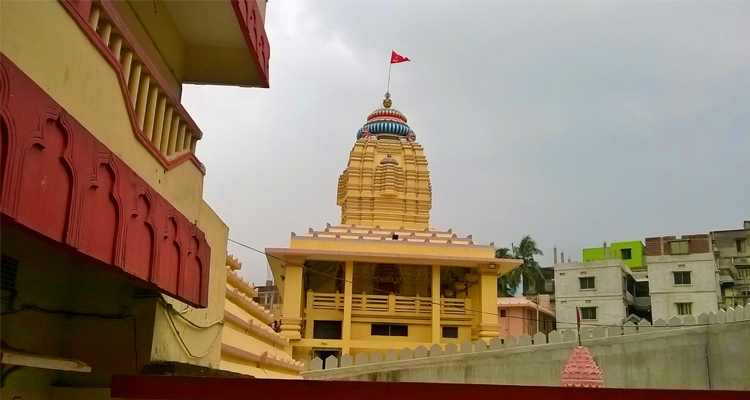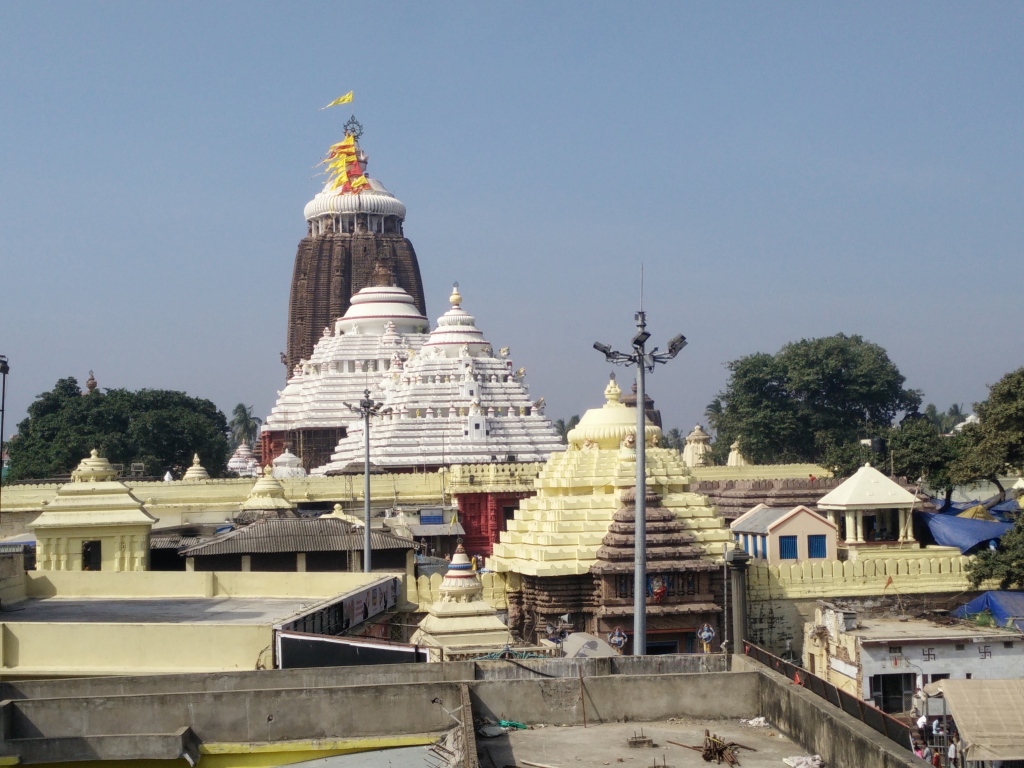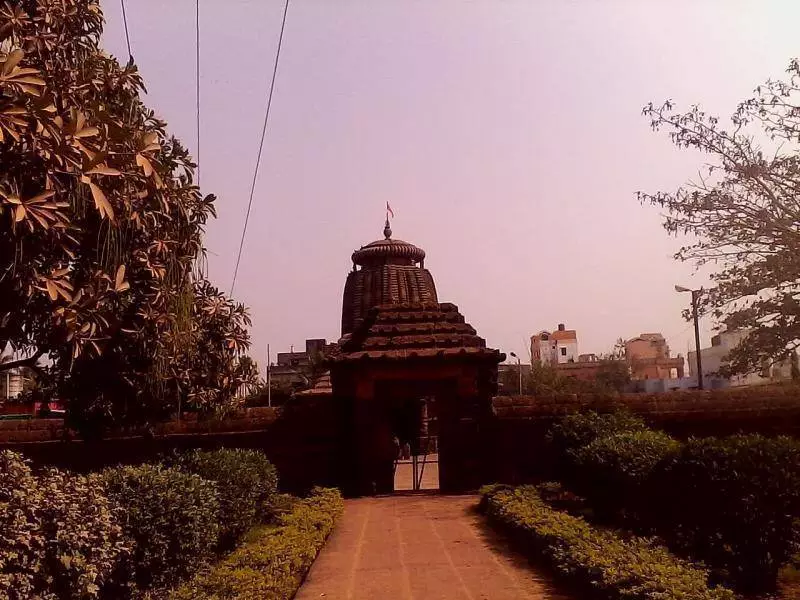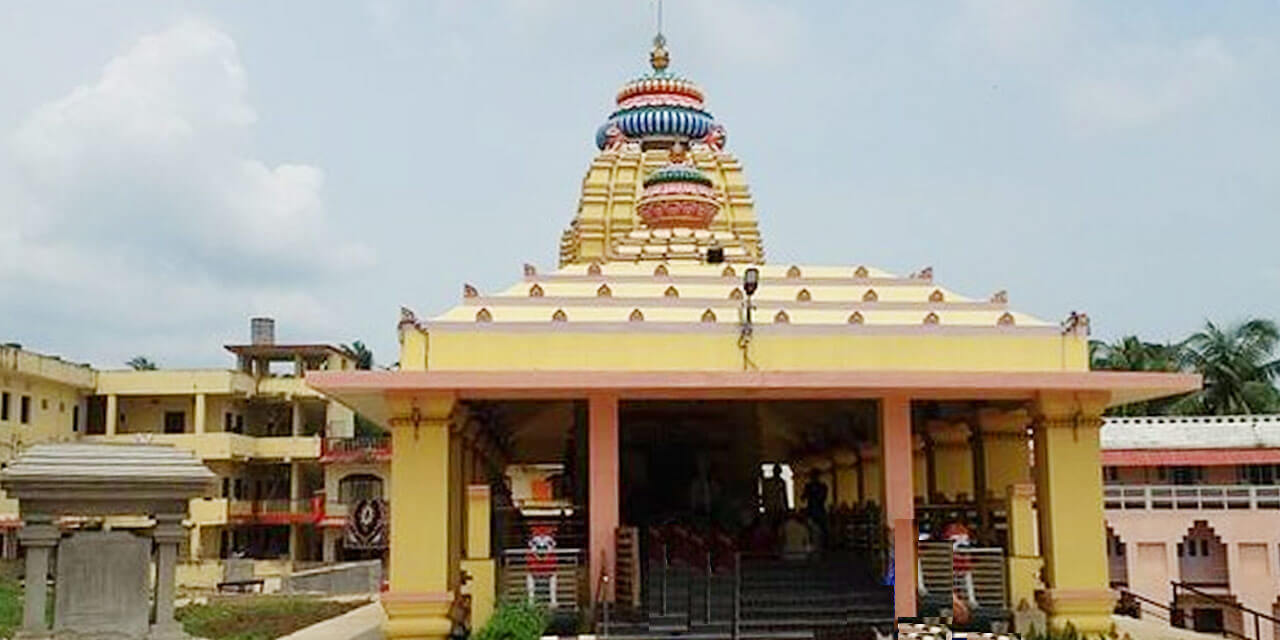Vimala Mata Mandir, located within the Jagannath Temple complex in Puri, Odisha, is one of the 51 Shakti Peethas of India, making it an extremely sacred site for devotees of Maa Shakti. According to Shakti Peetha legends, different parts of Sati Devi’s body fell across India after Lord Shiva carried her lifeless body in grief. In Puri, it is believed that the feet of Maa Shakti fell at the site of Vimala Temple, making it a center of divine feminine energy.
This Shakti Peetha is not only a spiritual hub but also deeply intertwined with Odisha’s religious and cultural traditions. Pilgrims from across India visit Vimala Temple to seek blessings, protection, and spiritual empowerment by offering prayers at the goddess’s feet.

Mythological Significance
The story of Vimala Temple is deeply rooted in the legend of Sati and Shiva. When Sati Devi immolated herself after her father Daksha insulted Shiva, Lord Shiva, overwhelmed with grief, carried her body across the universe. Lord Vishnu used his Sudarshan Chakra to cut the body into pieces, which fell at different locations, now known as the Shakti Peethas.
At Vimala Temple, it is believed that the feet of Maa Shakti fell here, symbolizing:
- Devotion and humility – the feet represent surrender to divine energy.
- Spiritual foundation – the goddess’s feet are a source of blessings and protection.
- Connection to divine feminine energy – worshipping her feet is believed to awaken inner strength and spiritual consciousness.
Devotees often circumambulate the sanctum, offer flowers, and focus their prayers on Maa Vimala’s feet, acknowledging her as the divine mother and protector.

Historical Background
Vimala Temple has a history that spans several centuries, existing alongside the Jagannath Temple in Puri. While Lord Jagannath is the main deity, Vimala serves as the guardian goddess, ensuring the sanctity of rituals and protecting devotees from negativity.
The temple’s position as a Shakti Peetha enhances its importance, attracting devotees who specifically worship the feet of Maa Shakti. Over the centuries, it has been a place for spiritual learning, meditation, and devotional practices, including traditional Tantric rituals, highlighting the goddess’s fierce yet protective nature.

Architecture and Layout
Vimala Temple exhibits traditional Kalinga architecture, characterized by simplicity, sacred symbolism, and intricate stone carvings.
- Sanctum Sanctorum: Houses Maa Vimala in her powerful form, with devotees especially focusing on her feet during prayers. The feet are often decorated with red flowers, turmeric, and sacred markings during rituals.
- Temple Courtyard: Provides space for circumambulation (pradakshina), which is considered highly auspicious when done with devotion toward the goddess’s feet.
- Surrounding Shrines: Include smaller shrines dedicated to other manifestations of Shakti, allowing devotees to engage with multiple aspects of divine feminine energy.
The temple’s architecture emphasizes spiritual immersion rather than extravagance, reflecting the focus on inner devotion and connection with Maa Shakti.
Festivals and Rituals
Vimala Temple observes several significant festivals that highlight the importance of worshipping the feet of Maa Shakti:
Sharadiya Durga Puja
Sharadiya Durga Puja is celebrated with great devotion, where Maa Vimala is worshipped alongside her manifestations. Devotees offer red hibiscus flowers and other sacred items to her feet, seeking courage, protection, and fulfillment of wishes.
Kali Puja
Although dedicated primarily to Maa Kali, Kali Puja at Vimala Temple emphasizes the goddess’s protective and transformative energy. Special rituals focus on purification, strength, and spiritual empowerment through prayers to Maa Vimala’s feet.
Daily Rituals
Daily offerings include flowers, incense, and mantras. Devotees believe that performing prayers with focus on the goddess’s feet can remove obstacles, purify the soul, and bring spiritual clarity.
Pilgrimage Significance
As a Shakti Peetha, Vimala Temple holds immense importance for devotees:
- Worshipping the feet of Maa Shakti is considered highly auspicious.
- Pilgrims believe their devotion can awaken inner strength and divine protection.
- Many undertake circumambulation, meditation, and extended stays at the temple to deepen their spiritual experience.
- Devotees also perform prasad offerings and rituals, which are believed to be more potent due to the goddess’s presence at the Shakti Peetha.
Visiting Vimala Temple
Being part of the Jagannath Temple complex, Vimala Temple is accessible for pilgrims visiting Puri:
How to Reach
- By Road: Connected via Puri city with buses, taxis, and private vehicles.
- By Rail: Puri Railway Station is the nearest railhead.
- By Air: Biju Patnaik Airport in Bhubaneswar is around 60 km away.
Best Times to Visit
- September to February – Weather is moderate and comfortable for pilgrimage.
- During Festivals – Sharadiya Durga Puja and Kali Puja are ideal for experiencing the full spiritual aura of the temple.
Tips for Pilgrims
- Dress modestly and follow temple rules.
- Offer prayers at the feet of Maa Shakti with focus and devotion.
- Avoid photography in the sanctum.
- Visit early to experience the temple’s peaceful spiritual environment.
FAQs for Vimala Mata Mandir
1. Why is Vimala Mata Mandir famous?
Vimala Mata Mandir is a revered Shakti Peetha in Puri, dedicated to Goddess Vimala, and considered the guardian of the Jagannath Temple.
2. Where is Vimala Mata Mandir located?
It is located inside the Jagannath Temple complex in Puri, Odisha.
3. What is worshipped at Vimala Mata Mandir?
The temple worships Goddess Vimala, who symbolizes purity, power, and protection of Lord Jagannath.
4. What are the temple timings?
The temple is usually open from 6:00 AM to 1:00 PM and 3:00 PM to 9:00 PM, depending on Jagannath Temple schedule.
5. Is photography allowed inside Vimala Mata Mandir?
Photography is not allowed inside the temple premises.
6. What is the significance of Vimala Mata as a Shakti Peetha?
It is believed that the ankle of Goddess Sati fell here, making it a sacred site of divine feminine energy.
7. How can I reach Vimala Mata Mandir?
The temple is easily accessible from Puri town, which is well-connected by rail, road, and Bhubaneswar airport.
8. Are there any special rituals at Vimala Mata Mandir?
Yes, rituals include daily aarti, bhog offerings, and festivals aligned with Jagannath Temple ceremonies.
9. Is there accommodation near Vimala Mata Mandir?
Yes, Puri offers a range of hotels, lodges, and guesthouses for pilgrims.
10. What is the best time to visit Vimala Mata Mandir?
October to March is ideal; major festivals coincide with Jagannath Rath Yatra and Durga Puja.


